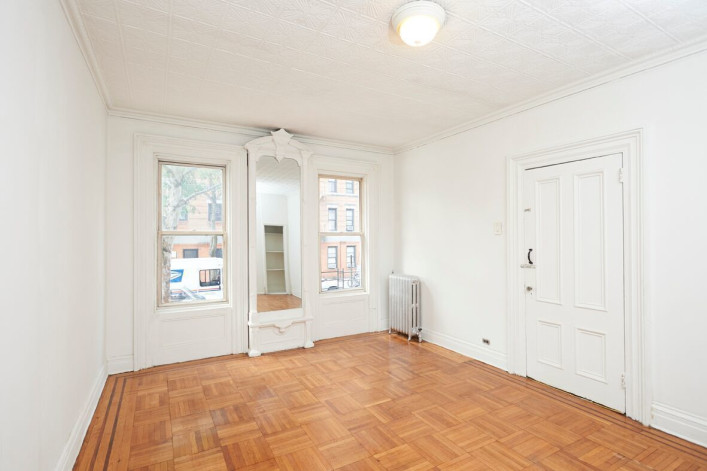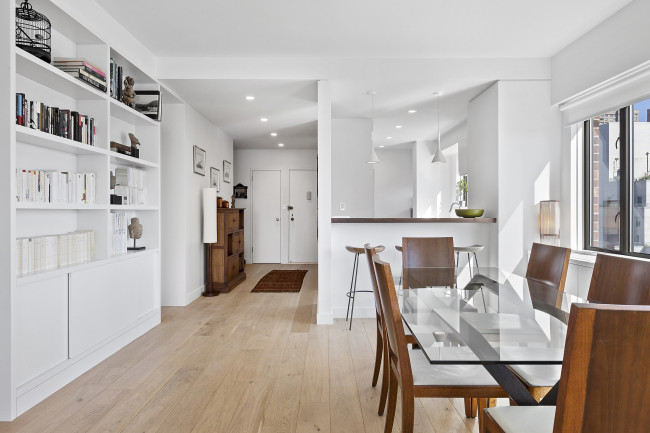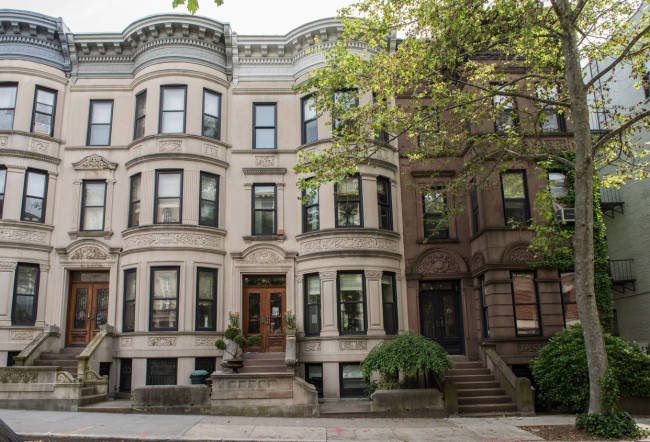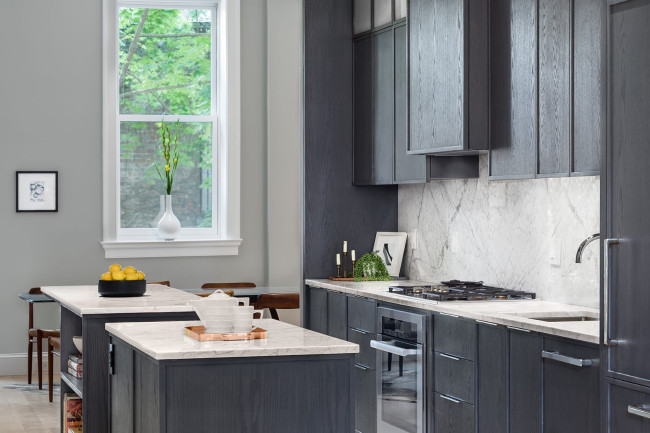Most popular renovation projects for NYC brownstones and townhouses: Brick Underground's best advice

The ground floor of a two-family brownstone at 283 South Second St. in Williamsburg. It is on the market for $1,649,999.
When it comes to townhouses, what you see is not what you get. A dark warren of rooms can be opened up to become a light-filled, open plan living space. A basement can be turned into a family room, or gym, or home office (or all three). A rooftop can become a new, very private, master suite.
Without a restrictive co-op board—you as a townhouse or brownstone owner have more freedom to renovate and get the house you want (of course the laws of physics and the Department of Buildings still apply). Depending on the location and type of townhouse you buy—and how much you are willing to spend—you might be in a position to expand up, down, or into the backyard.
The need for more space is driving brownstone sales in Brooklyn, where signed contracts have doubled since January 2019, according to an analysis by UrbanDigs of data from the REBNY Listing Service (brownstone sales in Manhattan are down 50 percent, according to Leslie J. Garfield, a real estate firm that specializes in this property type). Demand in Brooklyn has been fueled by buyers seeking townhouses in outlying neighborhoods like Williamsburg and Prospect Heights, where prices are typically lower than more established brownstone neighborhoods like Brooklyn Heights and Park Slope, the report said. You’re also more likely to find an unrenovated townhouse in an outlying neighborhood.
But if you’re not a design professional and you’re shopping for a townhouse, you might need some inspiration for what’s possible. Here are some of Brick Underground’s articles on the most popular renovations projects for NYC townhouses or brownstones.
Turn a cellar into a gym or playroom
Finishing a cellar is one way to carve out space for a home gym or playroom—which is especially helpful when you’re spending so much time at home in the pandemic. Writer Evelyn Battaglia talked to several New York City architects who say they get this question all the time—but now it’s an especially urgent request.
A basic conversion will run you at least $200 per square feet. And you’ll need to find out whether or not your cellar is conducive to being converted. Unlike with a basement, which is mostly above ground, cellars are mostly (or completely) underground—so dampness and ceiling heights are a factor. For more intel, read “Want to convert the cellar of a NYC townhouse into a gym or playroom? Here's what you need to know.”
Install central AC
Summer seems a long way off, but the hot months will eventually return. If the pandemic is not under control by then (and the latest statements by Dr. Anthony Fauci indicate that might be the case) then you’re looking at spending much of the summer at home. Installing central air conditioning will make your home cool and comfortable. If you’re a landlord—it’s also a way to attract tenants or keep tenants in a pricier rental, Battaglia wrote.
She explored the difference between traditional split systems, considered “true” central AC with ductwork and construction to hide the mechanicals; as well as wall-hung units, aka mini splits. For a look at the brands and prices to cool your townhouse, check out “Here's what you need to know about installing central AC in your NYC townhouse.”
Turn the back wall into windows
One very popular brownstone or townhouse renovation is to “blow out the back”—that means you replace the back wall with a wall of windows in order to bring in more light and connect the interior with the backyard. The result is a bold, modern look—often heightened by a contrast with a traditional façade.
It’s one of the more complicated projects you can do with a brownstone, Battaglia writes, and your architect will need to work with a structural engineer to draw up plans and submit them to the DOB for approval and permits. For on what’s involved, read “How to blow out the back of your NYC brownstone.”
Renovate a landmarked brownstone
Doing work on a brownstone in a landmark district presents its own set of challenges. Your architect will be required to submit all plans to the Landmark Preservation Commission, which will scrutinize any changes to elements that are visible from the street. It’s a good idea to work with an architect who is very experienced with landmark renovations and be prepared to wait—the process can take time if you want to make changes to the façade (interior changes are often more readily approved).
For more on what to expect when you navigate this process, see “Renovating a brownstone in a NYC historic district? Here's what you can—and can't—do.”
Add green features
A renovation is a good time to make your townhouse more energy efficient. Many upgrades can improve sustainability, lower utility costs, and make your indoor environment healthier. A good place to start is with a home energy audit and to engage LEED-certified contractor and architect. For more ideas, read “How to green your NYC renovation: 8 eco-friendly ideas.”
You Might Also Like































